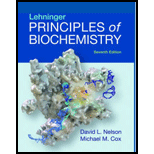
Concept explainers
(a)
To determine: Chargaff concluded that “no differences in composition have so far been found in DNA from different tissues of the same species” but a skeptic don’t agree by the data. How the data can be used to convince a skeptic.
Introduction:
Deoxyribonucleic acid (DNA) is a genetic material which is responsible for passing information from one generation to other. It is a double helical structure that consists of two parallel strands made up of nucleotides. Erwin Chargaff contributed in explaining the structure of DNA.
(b)
To determine: Whether Chargaff’s technique is capable of detecting a difference between the DNA of normal and a cancerous cell.
Introduction:
There are two types of nitrogenous bases: purines and pyrimidines. These bases pair with their complementary bases and form a
(c)
To determine: An argument based on the given data that supports “the base composition of DNA generally varies from one species to another”.
Introduction:
The amount of all bases adenine, guanine, cytosine and thymine is different in different organisms as the content of nucleotides is not fixed for different species. It is one of the conclusions of Chargaff’s rule.
(d)
To determine: An argument based on the given data, that supports “in all cellular DNAs, regardless of the species,
Introduction:
In every living species, the amount of adenine is equal to the amount of thymine and the amount of guanine is equal to cytosine. It is one of the conclusions of Chargaff’s rule.
(e)
To determine: The way in which given data can be used to argue that wheat germ DNA is not a monotonous repeating sequence.
Introduction:
“Tetranucleotide hypothesis states that DNA is a monotonous tetranucleotide
Want to see the full answer?
Check out a sample textbook solution
Chapter 8 Solutions
Lehninger Principles of Biochemistry
 BiochemistryBiochemistryISBN:9781319114671Author:Lubert Stryer, Jeremy M. Berg, John L. Tymoczko, Gregory J. Gatto Jr.Publisher:W. H. Freeman
BiochemistryBiochemistryISBN:9781319114671Author:Lubert Stryer, Jeremy M. Berg, John L. Tymoczko, Gregory J. Gatto Jr.Publisher:W. H. Freeman Lehninger Principles of BiochemistryBiochemistryISBN:9781464126116Author:David L. Nelson, Michael M. CoxPublisher:W. H. Freeman
Lehninger Principles of BiochemistryBiochemistryISBN:9781464126116Author:David L. Nelson, Michael M. CoxPublisher:W. H. Freeman Fundamentals of Biochemistry: Life at the Molecul...BiochemistryISBN:9781118918401Author:Donald Voet, Judith G. Voet, Charlotte W. PrattPublisher:WILEY
Fundamentals of Biochemistry: Life at the Molecul...BiochemistryISBN:9781118918401Author:Donald Voet, Judith G. Voet, Charlotte W. PrattPublisher:WILEY BiochemistryBiochemistryISBN:9781305961135Author:Mary K. Campbell, Shawn O. Farrell, Owen M. McDougalPublisher:Cengage Learning
BiochemistryBiochemistryISBN:9781305961135Author:Mary K. Campbell, Shawn O. Farrell, Owen M. McDougalPublisher:Cengage Learning BiochemistryBiochemistryISBN:9781305577206Author:Reginald H. Garrett, Charles M. GrishamPublisher:Cengage Learning
BiochemistryBiochemistryISBN:9781305577206Author:Reginald H. Garrett, Charles M. GrishamPublisher:Cengage Learning Fundamentals of General, Organic, and Biological ...BiochemistryISBN:9780134015187Author:John E. McMurry, David S. Ballantine, Carl A. Hoeger, Virginia E. PetersonPublisher:PEARSON
Fundamentals of General, Organic, and Biological ...BiochemistryISBN:9780134015187Author:John E. McMurry, David S. Ballantine, Carl A. Hoeger, Virginia E. PetersonPublisher:PEARSON





